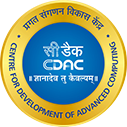Eklavya Model Residential Schools
Eklavya Model Residential Schools
In the context of the trend of establishing quality residential schools for the promotion of education in all areas and habitations in the country, the Eklavya Model Residential Schools (EMRS) for ST students take their place among the Jawahar Navodaya Vidyalayas, the Kasturba Gandhi Balika Vidyalayas and the Kendriya Vidyalayas. Eklavya Model Residential Schools (EMRS) are set up in States/UTs with grants under Article 275(1) of the Constitution of India.
EMRSs provide free education to ST children from class VI to XII in residential set up. The scheme is being implemented by the Ministry of Tribal Affairs, Government of India.
Objectives of EMRS
The schools are aimed to provide quality upper primary, secondary and senior secondary level education to ST and PVTG students in tribal dominated areas, along with extra-curricular activities, to enable them to access the best opportunities in education and to bring them at par with the general population.
Coverage of the scheme
Every block with more than 50% ST population and at least 20,000 tribal persons, will have an Eklavya Model Residential School. These schools will be on par with Navodaya Vidyalayas and will have special facilities for preserving local art and culture besides providing training in sports and skill development. Across the country, as per census 2011 figures, there are 564 sub-districts i.e. blocks/taluka/tehsil having more than 50% ST population and at least 20,000 tribal persons. There are currently 401 funcational EMRS in the country.
To access the list of EMRS, click here.
Land requirement
A minimum of 15 acres of Landis required for establishing EMRSs
Admission to EMRSs
- Admission to these schools will be through an appropriate method as per transparent objective criteria to be decided by the NESTS based on the norms under RTE Act, 2009.
- The number of seats for boys and girls will be equal.
- The total maximum sanctioned strength of a school shall be 480 students.
- At the Upper Primary and Secondary level i.e. from class VI to X, every class will have maximum 60 students in 2 sections of 30 students each
- At the Senior Secondary level (class XI &XII), there will be three sections per class for the three streams in Science, Commerce &Humanities. The maximum
sanctioned strength of each section should be 30 students. In case of short fall in a section, ST students from other schools may be admitted as per procedure mentioned at above para (1). - 10% of the seats of EMRS/EMDBS can be filled up by non-ST candidates (shall not exceed the total strength of 480). Priority shall be given to children of
EMRSs/EMDBS staff, children who have lost their parents to Left wing extremism and insurgencies, children of widows, children of divyang parents etc. - Reservation of 20% seats under sports quota for deserving ST students who have excelled in the field of sports.
For detailed admission guidelines, click here.
Management and Running of EMRS
- National level - National Education Society for Tribal Students (NESTS) has been established with an objective to impart quality education to ST children through establishment of Eklavya Model Residential Schools (EMRS).
- State/UT level : EMRS Societies. State Societies will maintain, control and manage the Schools as per the guidelines and norms formulated by the Ministry of Tribal Affairs, Government of India and undertake other responsibilities as delegated by the MoTA/ NESTS.
- District level : A District Level Committee is to be formed at the District Level to supervise the functioning of the Schools in the District. The DLC will be headed by the District Collector with local educationists, tribal representatives and officers from the District as members to supervise the functioning of the Schools, provide necessary assistance in effective functioning of the school.
Costs & Budget
- Capital Cost (non-recurring) - The capital cost for the school complex, including hostels and staff quarters will be upto Rs. 20.00 crore with a provision of upto additional 20% for North East, hilly areas, difficult areas and areas affected by Left Wing Extremism.
- Recurring Cost
- Recurring cost of @ Rs. 1,09,000/- per child per year will be admissible w.e.f. 1.4.2019
- For procurement of essential, non-recurring items like furniture/equipment including for the kitchen, dining, hostel, recreation, garden etc. upto Rs. 20 lakh per school may be allowed once in every 5 years
- Upgradation of existing schools - Upgradation of already sanctioned EMRSs on need basis with unit cost subject to a maximum of Rs. 5 crores per school (to be staggered over four years i.e. 2018-19 to 2021-22).
Source : Scheme guidelines of EMRS, Ministry of Tribal Affairs
கடைசியாக மாற்றப்பட்டது : 7/27/2023
This topic covers various schemes related to Sched...
